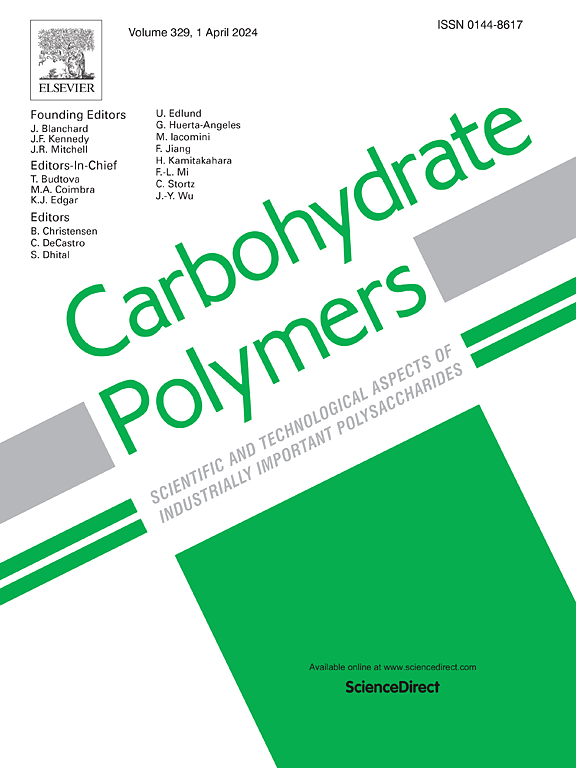Preparation of TEMPO-partially oxidized sodium alginate/SF scaffolds with degradation compatibility for skin defect repair
IF 10.7
1区 化学
Q1 CHEMISTRY, APPLIED
引用次数: 0
Abstract
This study aimed to curtail the secondary damage caused by traditional dressings by cross-linking TEMPO-mediated oxidized sodium alginate (TOSA) with silk fibroin (SF) through the EDC system and preparing the scaffolds through freeze-drying and anhydrous ethanol immersion. The good adsorption, mechanical properties, high porosity, and good in vitro and in vivo biocompatibility of the scaffold can improve the healing efficiency of the wound. Additionally, sodium alginate was oxidized by the TEMPO system to lower its molecular weight and hence increase the degradation rate of the scaffold. Consequently, the scaffold demonstrated a rapid degradation rate (42.26 % degradation in 7 days) in the in vitro enzyme solution. The scaffold will not induce secondary damage to the wound and does not require removal. Furthermore, the oxidation degree of sodium alginate was regulated by the TEMPO system, supporting the preparation of degradation-adapted skin tissue engineering scaffolds.

求助全文
约1分钟内获得全文
求助全文
来源期刊

Carbohydrate Polymers
化学-高分子科学
CiteScore
22.40
自引率
8.00%
发文量
1286
审稿时长
47 days
期刊介绍:
Carbohydrate Polymers stands as a prominent journal in the glycoscience field, dedicated to exploring and harnessing the potential of polysaccharides with applications spanning bioenergy, bioplastics, biomaterials, biorefining, chemistry, drug delivery, food, health, nanotechnology, packaging, paper, pharmaceuticals, medicine, oil recovery, textiles, tissue engineering, wood, and various aspects of glycoscience.
The journal emphasizes the central role of well-characterized carbohydrate polymers, highlighting their significance as the primary focus rather than a peripheral topic. Each paper must prominently feature at least one named carbohydrate polymer, evident in both citation and title, with a commitment to innovative research that advances scientific knowledge.
 求助内容:
求助内容: 应助结果提醒方式:
应助结果提醒方式:


